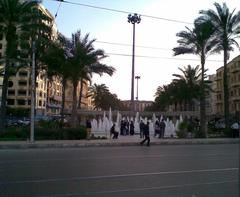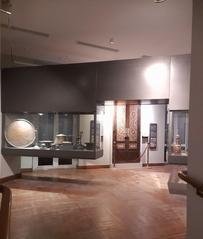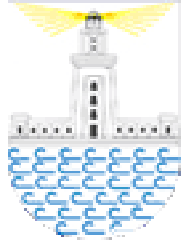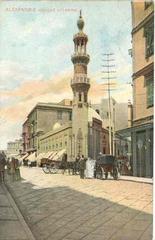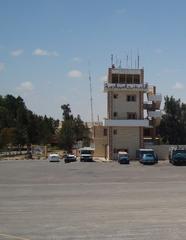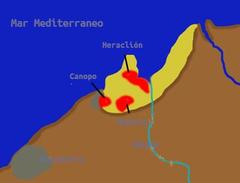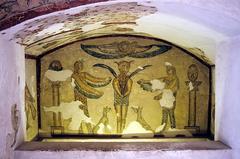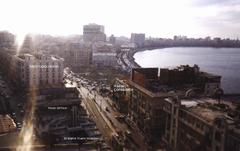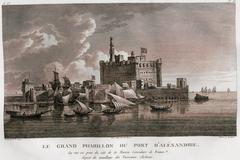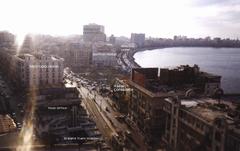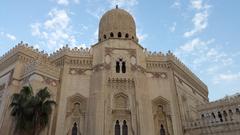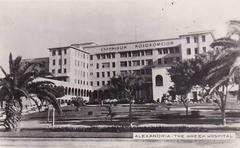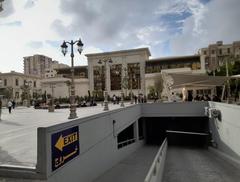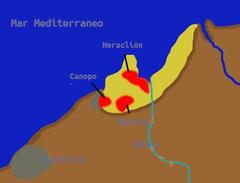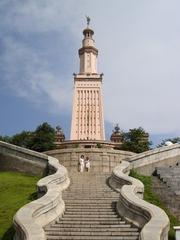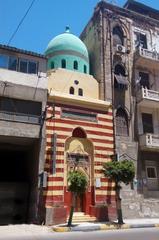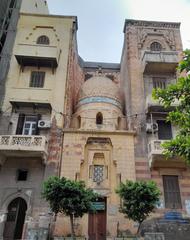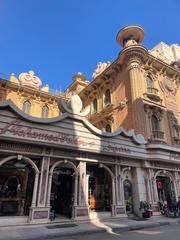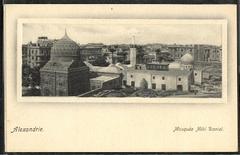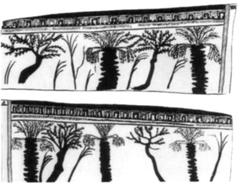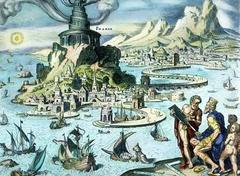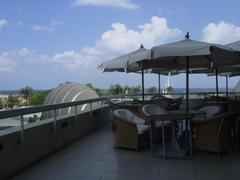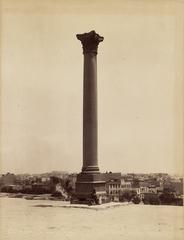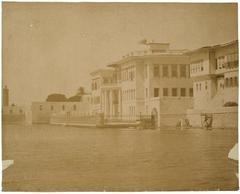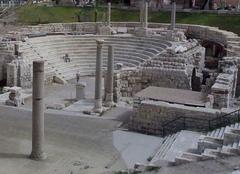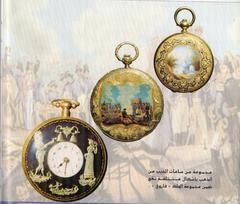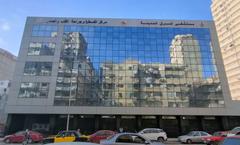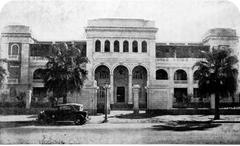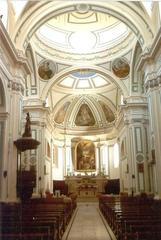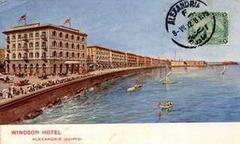Heptastadion of Alexandria: Visiting Hours, Tickets, and Historical Significance
Date: 14/06/2025
Introduction
The Heptastadion of Alexandria stands as one of antiquity’s most impressive feats of engineering and urban planning. Although no visible remains exist today, its profound influence on the city’s maritime dominance, economic growth, and cosmopolitan culture endures. Built in the early Ptolemaic era, this grand causeway linked the mainland of Alexandria with Pharos Island—the legendary site of the Lighthouse of Alexandria, one of the Seven Wonders of the Ancient World. The Heptastadion’s innovative design divided Alexandria’s harbor into two distinct basins, facilitating both commercial and military activities and shaping the city’s urban landscape through centuries (Britannica; Wikipedia; CEAlex).
Though the Heptastadion itself has long disappeared beneath layers of silt and urban development, its enduring legacy can be traced through Alexandria’s neighborhoods, waterfront promenades, and modern street layouts. This guide explores the Heptastadion’s historical significance, engineering marvels, and practical visitor information—including how to experience its hidden footprint today.
Contents
- Foundation and Origins
- Construction and Engineering
- Urban and Maritime Impact
- Historical Role and Legacy
- Cultural and Social Influence
- Visitor Information: Hours, Tickets, and Tours
- Nearby Attractions and Activities
- Frequently Asked Questions (FAQ)
- Conclusion and Practical Tips
- References and Further Reading
Foundation and Origins
Founded in 331 BCE by Alexander the Great, Alexandria was strategically located between the Mediterranean Sea and Lake Mareotis. Master-planned by Dinocrates of Rhodes, the city embodied Hellenistic urban ideals, including a grid of broad avenues and monumental spaces (Britannica; The Collector; Everything Everywhere).
The Heptastadion, meaning “seven stadia” (about 1,200 meters), was conceived as a massive stone and earth causeway. Its primary purpose was to unite the mainland with Pharos Island, facilitating safe passage, robust trade, and a dual-harbor system that would become the city’s lifeblood (Wikipedia; Academia.edu).
Construction and Engineering
Erected during the reign of Ptolemy I Soter (323–283 BCE), the Heptastadion stretched about 1,200 meters in length and up to 200 meters in width. As a mole, it not only provided physical access to Pharos but also transformed the city’s maritime topography (Wikipedia; Everything Everywhere).
Key engineering features:
- Harbor Division: Split Alexandria’s waterfront into the Eastern (military/royal) and Western (commercial) harbors (Britannica).
- Channels and Bridges: Two channels allowed for water flow and ship passage, which could be defended or blocked in wartime—famously during Julius Caesar’s siege (Wikipedia).
- Aqueduct Function: May have supplied fresh water to Pharos Island (Wikipedia).
Urban and Maritime Impact
The Heptastadion’s completion enabled Alexandria to flourish as a maritime power. The dual harbor system provided safe anchorage for both commercial and military fleets, protected shipping lanes, and gave the city strategic control over Mediterranean trade (Academia.edu).
Environmentally, its construction influenced coastal sedimentation, eventually forming the land bridge that gave rise to the Mansheya district. The causeway’s route remains embedded in Alexandria’s modern urban grid (Nabataea.net; CEAlex).
Historical Role and Legacy
Throughout antiquity, the Heptastadion played a pivotal role in Alexandria’s defense and prosperity. Its channels could be sealed to control access or defend against naval attacks, as during Caesar’s campaign in 47 BCE (Wikipedia). For centuries, the harbors it created enabled Alexandria to supply grain to Rome and maintain its status as a center of trade and learning (AncientWorlds).
Over time, natural silting and urban expansion buried the Heptastadion beneath new neighborhoods. Modern geophysical surveys have traced its path, confirming its ongoing influence on Alexandria’s cityscape (Academia.edu; Academia.edu).
Cultural and Social Influence
The Heptastadion was a symbol of Alexandria’s cosmopolitan spirit and engineering prowess. It fostered the city’s growth as a hub for Greek, Egyptian, Roman, and later Byzantine and Arab cultures. Ancient writers such as Strabo marveled at its scale and urban impact (Academia.edu).
Today, the area above the Heptastadion’s original route includes neighborhoods like Mansheya and the Ras el-Tin peninsula. The Citadel of Qaitbay, built on the site of the ancient lighthouse, remains a prominent landmark (Antiquities Bibalex).
Visitor Information: Hours, Tickets, and Tours
Visiting the Heptastadion Area
No Standing Ruins or Dedicated Site:
The Heptastadion is completely buried, so there are no visible remains, entrance fees, or official visiting hours. Visitors explore its legacy by walking the Corniche, the Mansheya district, and Ras el-Tin.
Key Landmarks:
- Citadel of Qaitbay: Open daily (9:00 AM–5:00 PM). Tickets cost around 80 EGP for adults. The Citadel occupies the ancient lighthouse’s site and offers panoramic harbor views (Egypt Planners).
- Bibliotheca Alexandrina: Houses models and interactive exhibits on Alexandria’s ancient engineering (Divergent Travelers).
- Alexandria National Museum: Offers historical context and artifacts (Divergent Travelers).
How to Get There:
Alexandria is accessible from Cairo by train or bus. Taxis, ride-sharing apps, and walking tours are available within the city (Wide World Trips; Global Highlights Egypt Trip Plan).
Guided Tours:
Several local operators offer walking and historical tours, including the Heptastadion route, the Citadel of Qaitbay, and the Corniche (Egypt Time Travel).
Nearby Attractions and Activities
- Roman Amphitheatre: Ancient performance venue with mosaics and ruins.
- Pompey’s Pillar: Impressive Roman column and sphinx statues.
- Underwater Archaeology: Certified divers can explore submerged harbor remains (Divergent Travelers).
- The Corniche: Coastal promenade following the Heptastadion’s historic path, ideal for scenic walks and photography.
Practical Visitor Tips
- Best Visiting Season: Spring (March–April) and autumn (September–November) offer mild weather (The Egyptian Traveler).
- Dress Code: Modest clothing is recommended; comfortable walking shoes are essential.
- Safety: Daytime visits are safest; crowded areas require vigilance with personal belongings.
- Accessibility: Sidewalks can be uneven; taxis or ride-hailing are best for those with mobility needs.
- Language: Arabic is official, but English is widely spoken in tourist zones.
- Currency: Egyptian Pound (EGP); ATMs widely available.
Frequently Asked Questions (FAQ)
Q: Are there visible ruins of the Heptastadion?
A: No, the Heptastadion is buried beneath modern Alexandria. Its original path can be traced via the Corniche and nearby neighborhoods.
Q: Do I need tickets or to observe visiting hours?
A: No tickets or hours apply to the Heptastadion itself. Tickets are required for museums and the Citadel of Qaitbay.
Q: Can I take a guided tour focused on the Heptastadion?
A: Yes, several operators include the Heptastadion’s history in their walking tours.
Q: Is diving possible to see any remains?
A: Yes, certified divers can explore related underwater ruins in Alexandria’s harbors.
Conclusion
Though the Heptastadion no longer stands above ground, its influence persists in Alexandria’s urban and maritime identity. Exploring the Corniche, Mansheya, and the Citadel of Qaitbay allows visitors to walk in the shadow of this ancient causeway, connecting past and present. For a comprehensive experience, combine these sites with museum visits and guided tours, and make use of modern resources such as interactive maps and mobile apps.
For more in-depth guides and travel updates, download the Audiala app and follow us on social media. Let Alexandria’s Heptastadion inspire your journey through one of Egypt’s most storied cities.
References and Further Reading
- Alexandria, Encyclopaedia Britannica
- Heptastadion, Wikipedia
- The Harbour of Alexandria at the times of the LIGHTHOUSE of ALEXANDRIA, Academia.edu
- The History of Alexandria, Academia.edu
- Harbours of Alexandria, CEAlex
- Things to Do in Alexandria, Divergent Travelers
- Exploring the Ancient City of Alexandria, Everything Everywhere
- Alexandria Historical Sites Guide, Egypt Time Travel
- Wide World Trips: Things to Do in Alexandria
- The Egyptian Traveler: Alexandria Itinerary
- Global Highlights Egypt Trip Plan
- Antiquities Bibalex

